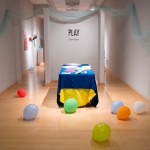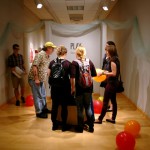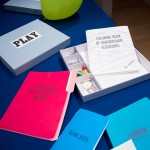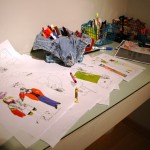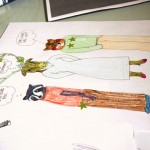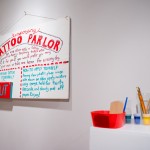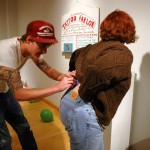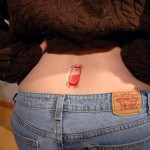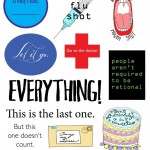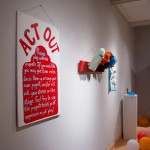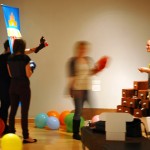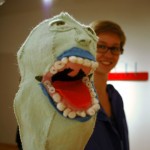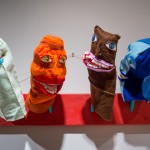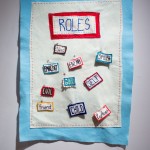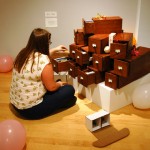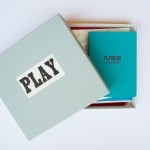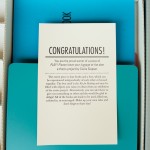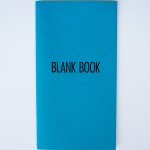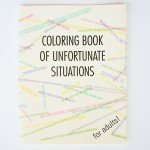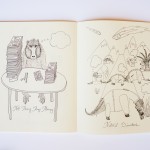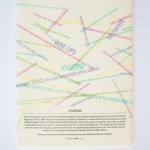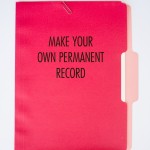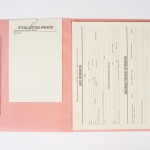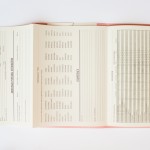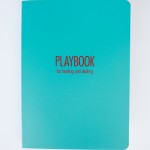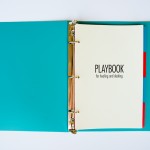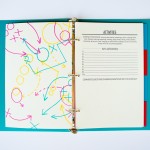PLAY
a project of interactive art about play for adults, mental health, coping, and healing.
- Gallery view of PLAY
- Gallery view of PLAY with participants
- Detail of the book piece PLAY and the component parts
- Coloring Book of Unfortunate Situations and Make Your Own Permanent Record station
- Temporary Tattoo Parlor
- Temporary Tattoo Parlor in Use
- Tattoo Example "Keep Your Mouth Shut"
- Temporary Tattoo examples
- Installation view of Act Out
- Act Out in use
- Puppet detail
- Puppet detail
- Puppet badge detail
- Make Your Own Kit for Healing in use
This installation consisted of an artist’s book entitled PLAY, two interactive book stations, and three other interactive pieces entitled Act Out, Kit for Healing, and the Temporary Tattoo Parlor.
The piece Act Out was four felt puppets, name badges, role badges, and a stage for visitors to use how they wished. The Kit for Healing was constituted of twelve wooden drawers labeled with different methods of healing or dealing such as Food & Drink, Spirituality & Religion, Laughter, and Silence. The drawers were filled with representative objects and the visitors were invited to fill a box with items to take away from the show. The Temporary Tattoo Parlor was a station for the application of temporary tattoos of things people tell themselves over and over but always forget like “I’m Never Drinking Again” or “Don’t Eat That” or “Keep Your Mouth Shut” and visitors were invited to use the tattoos. These pieces were created from a questionnaire distributed to the public.
The artist’s book PLAY is comprised of four books in a divided box. This was my project for an MFA Thesis in Book Arts. The books are a Coloring Book of Unfortunate Situations, Playbook for Healing and Dealing, Make Your Own Permanent Record, and Blank Book. The content for the books came from a questionnaire distributed to the public. You can purchase a copy here.
Description of each book component (click on the title to read a pdf of each book:):
1. Coloring Book of Unfortunate Situations
This letterpress printed book is bound with a single pamphlet stitch and is 8.75” x 11.25” when closed. The cover is printed in six runs with all of the collected Unfortunate Situations.
I have collected “unfortunate situations” from my community and am drawing them for the content inside this book. At the back there is a page for the readers to draw their own personal unfortunate situations. Some examples of the contributions are Regretting Sex, Disease and Illness, and Ugly Babies. This book is also for sale as an offset printed version here.
2. Make Your Own Permanent Record
An accordion style letterpress printed book bound in a red manila folder.
Remember when you were in elementary and middle school and there was always the looming threat of something ending up on your Permanent Record? I do. I didn’t often misbehave but I remember a terror in the back of my mind of something that I did as a child following me my entire life.
From Hoarders to Twitter to the Library of Congress humans feel the need to archive ourselves. This can be for good—to ensure negative history does not repeat itself to and not reinvent the wheel. However it can also be negative—years later your family will bring up the one time you forgot ______ or did_________. Everyone makes mistakes and we all have heard the stories of pasts being dredged up years later in the media.
The reader is be encouraged to write in their own Permanent Record with all the things they wish were on their permanent record, including an additional evaluation for others to contribute. For my own version, I included items such as:
For a few months in middle school I made everyone in my grade something as a present every Wednesday and dubbed it Happy Wednesday.
I biked 1000 miles and camped solo.
In 2009 I traded a pound of worms for a food dehydrator.
This piece inspires thought about archiving and records, our educational system, institutional parenting, and how we deal with issues as children and adults. Furthermore, it empowers people to explore and take responsibility for their own pasts and futures.
3. Kit for Healing
Archival divided box constructed by the artist.
The box itself has compartments to act as a Kit for Healing. Some examples of items others have put in their kits are bandaids, glue, bouncy balls, beautiful rocks, and a needle and thread. (If you would like I can fill the kit for you).
4. Playbook for Healing and Dealing
Screen printed binder and letterpress printed contents.
Everyone has different methods of healing and coping. Each person usually also has a variety of mechanisms they use to heal and cope. This “playbook” is modeled after the standard athletic play book and contains different “plays” or methods for dealing and healing. These were collected from the community anonymously. They are presented in a binder so the reader can re-order the pages according to their methods. There are several pages at the end for the reader to write their own plays.
5. Blank Books
Each box contains a pamphlet stitched blank book for the reader to use however they wish.
![]()
This work by Claire Siepser is licensed under a Creative Commons Attribution-NonCommercial-ShareAlike 3.0 Unported License.

